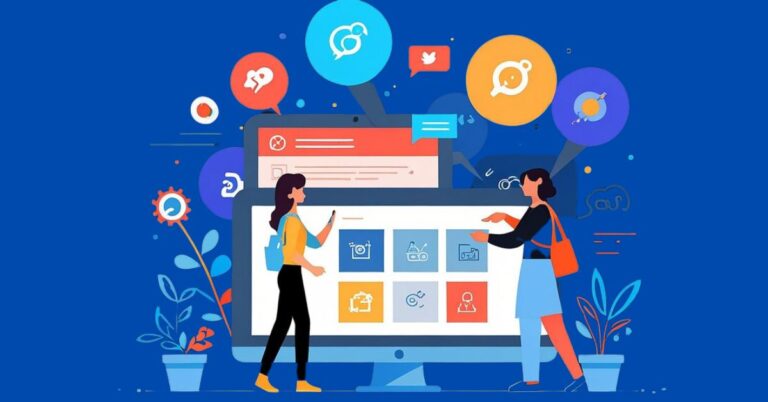Mastering the Art of Event Planning for Meetups and Workshops
In today’s dynamic world, the ability to seamlessly plan both online and in-person events is invaluable. Whether you’re organizing meetups or workshops, the goal is to create engaging and memorable experiences for every participant. This blog will guide you through essential steps and strategies to master event planning with finesse.
Understanding Your Audience
Knowing your audience is the first step to planning successful events. Are they professionals seeking networking opportunities, or hobbyists looking to learn something new? Depending on their interests and expectations, you can tailor your event to meet their needs more effectively. By understanding your audience, you can select topics, formats, and speakers that will resonate with them, increasing engagement and satisfaction.
A thorough analysis of your audience helps in designing content that aligns with their preferences. Surveys, social media polls, or previous feedback can give you insights into what your audience truly desires. When an event feels personalized, attendees are more likely to participate actively and spread the word about their positive experiences.
Finally, consider the demographics and geographic locations of your audience. This information can guide decisions about whether an event should be virtual, in-person, or hybrid. For example, a community manager in Tulsa may find a mix of online and physical events more effective to cater to both local and remote participants.
Choosing the Right Platform
Selecting the right platform for your event is crucial. For online events, options like Zoom, Microsoft Teams, or Google Meet are popular due to their user-friendly interfaces and reliable performance. Evaluate each platform’s features, such as breakout rooms, chat functions, and recording capabilities, to ensure they meet your event’s needs.
For in-person events, the venue choice sets the tone. Consider factors like location, capacity, amenities, and accessibility. The venue should align with your event’s theme and the audience’s expectations. For instance, a tech workshop might benefit from a modern co-working space, while a wellness retreat may be best hosted in a serene outdoor setting.
Hybrid events require integrating both virtual and physical elements. Technology plays a significant role here. You need a robust setup that allows seamless interaction between online and in-person attendees, ensuring everyone feels included and engaged.
Crafting Engaging Content
The content is the heart of any event. It should be informative, relevant, and engaging to capture and retain the audience’s attention. Start by defining clear objectives and key takeaways for your event. What should participants learn or experience by the end?
For workshops, interactive content such as hands-on activities, quizzes, and group discussions enhance learning and keep the audience engaged. Meetups can benefit from panel discussions, Q&A sessions, and networking opportunities that encourage participation and interaction.
Additionally, consider incorporating multimedia elements like videos, presentations, and live demonstrations to make content more dynamic. Visuals can break the monotony and help explain complex ideas more effectively.
Promoting Your Event
Promotion is key to attracting participants. A well-thought-out marketing strategy ensures your event reaches the right audience. Start by leveraging social media platforms to create buzz. Share engaging posts, create event pages, and use targeted ads to reach a wider audience.
Email marketing is another effective tool. Send out newsletters and personalized invitations to your mailing list. Highlight the event’s benefits, key speakers, and any exclusive offers to entice potential attendees.
Collaborate with influencers or industry leaders to expand your reach. Their endorsement can lend credibility and attract their followers to your event. Don’t forget to encourage past attendees to share their positive experiences on social media or review sites, as word-of-mouth is a powerful promotional tool.
Managing Logistics and Details
Logistics are often the backbone of any successful event. Attention to detail in planning ensures smooth execution. For online events, test all technical aspects beforehand. Ensure everyone involved knows how to use the platform’s features and troubleshoot common issues.
In-person events require careful consideration of factors like registration, seating arrangements, catering, and transportation. Coordinate with vendors and service providers to ensure everything is in place. A detailed schedule and checklist can help keep everything on track.
Hybrid events demand even more meticulous planning. Ensure that both online and in-person participants have equal access to content and networking opportunities. Test audio-visual setups and internet connectivity to avoid technical glitches during the event.
Building a Community
An event is more than just a one-time gathering; it’s an opportunity to build a community. Encourage participants to connect with each other before, during, and after the event. Provide platforms for networking, such as discussion forums or social media groups.
Follow up with attendees after the event with thank-you emails, feedback surveys, and highlights of the event. This not only shows appreciation but also provides valuable insights for future events. Keep the community engaged with regular updates, newsletters, or exclusive content related to the event topic.
Communities thrive on shared experiences and continued interaction. By fostering a sense of belonging, you can turn one-time participants into loyal supporters who eagerly anticipate future events.
Evaluating Success and Gathering Feedback
Post-event evaluation is crucial for continuous improvement. Analyze attendance rates, participant engagement, and feedback to measure the event’s success. Did it meet your objectives? What aspects were most appreciated, and what could be improved?
Use surveys to gather feedback from attendees. Ask specific questions about the content, speakers, logistics, and overall experience. Be open to constructive criticism and use it as a tool for growth.
Share the success stories and testimonials from the event with your community. Highlighting positive outcomes reinforces the value of your events and encourages future participation.
Adapting to Change and Innovation
The event landscape is constantly evolving. Stay updated with the latest trends, technologies, and best practices in event planning. Adaptability is key to keeping your events fresh and appealing.
Experiment with innovative formats, such as gamified workshops, virtual reality experiences, or themed events. Be open to feedback and willing to try new approaches to enhance the attendee experience.
By staying ahead of the curve, you can position your events as cutting-edge and in demand. Continuous innovation keeps your audience excited and eager to participate.
Building Long-term Relationships
Events are an excellent way to foster long-term relationships with participants, partners, and sponsors. Nurture these connections by maintaining regular communication and offering value beyond the event itself.
Recognize and appreciate loyal attendees and partners. Offer exclusive perks or early access to future events as a token of gratitude. Building strong relationships fosters loyalty and encourages continued engagement.
Your event community becomes a valuable asset over time, providing support and advocacy for your brand or organization. Invest in these relationships to create a thriving ecosystem around your events.
Conclusion
Mastering event planning requires a blend of creativity, organization, and adaptability. By understanding your audience, crafting engaging content, and effectively managing logistics, you can create memorable and impactful events. Building a sense of community and fostering long-term relationships enhance the overall experience for participants and stakeholders.







